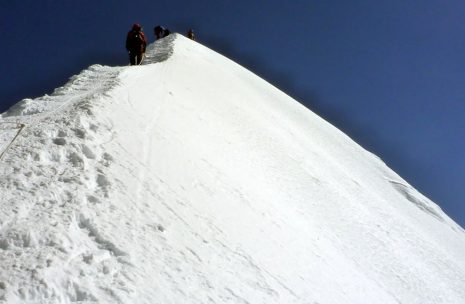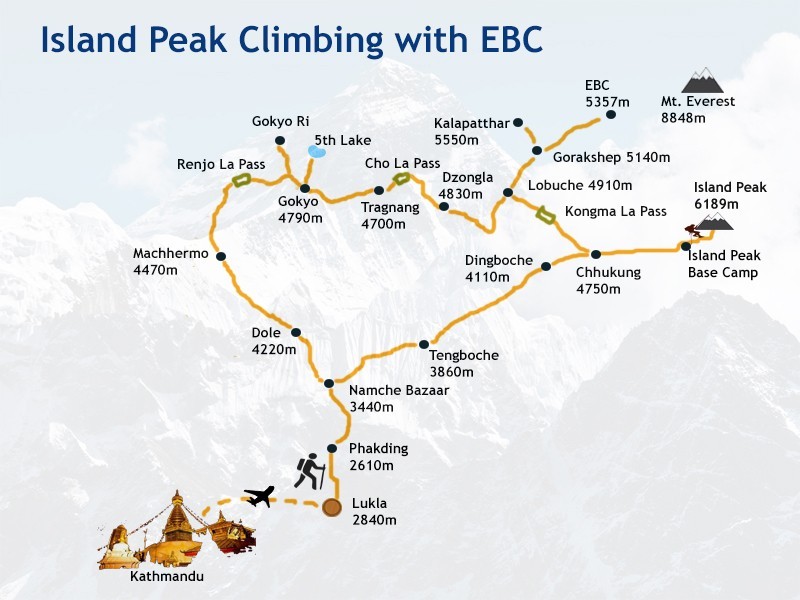Island Peak Climbing, also known as Imja Tse, is a popular trekking and mountaineering destination in the Khumbu region of Nepal. The peak is 6,189 meters (20,357 feet) tall and offers stunning views of the surrounding mountains, including Everest, Lhotse, and Makalu.
Island Peak is a relatively challenging climb, but it is not as technical as some of the other peaks in the area. It is a good choice for experienced climbers who are looking for a challenging but rewarding climb.
The climb to Island Peak typically takes 15-19 days, starting in Kathmandu and ending in Lukla. The first few days of the trek are spent acclimatizing to the altitude, and the final few days are spent climbing to the summit. The summit day is a long and challenging day, but the views from the top are worth it.
In addition to the physical challenges of the climb, climbers also need to be aware of the risks of altitude sickness. Altitude sickness is a serious condition that can be fatal if not treated. It is important to ascend slowly and to listen to your body. If you start to feel symptoms of altitude sickness, it is important to descend to a lower altitude immediately.
Island Peak Climbing is a great way to experience the beauty of the Himalayas and to challenge yourself physically and mentally. It is important to be well-prepared for the climb, both physically and mentally. If you are considering climbing Island Peak, I recommend hiring a reputable trekking company to help you plan and execute your climb.
Here are some additional things to know about Island Peak Climbing:
The best time to climb Island Peak is during the spring (March-May) or autumn (September-November).
The cost of climbing Island Peak typically ranges from $2,000 to $3,000.
The minimum age requirement for climbing Island Peak is 16 years old.
Climbers must have a valid passport and visa to enter Nepal.
Climbers must also have a medical certificate stating that they are fit to climb Island Peak.



 Mardi Himal Peak Climbing – 16 days
Mardi Himal Peak Climbing – 16 days
 Chulu East Peak Climbing – 24 days
Chulu East Peak Climbing – 24 days
 Singu Chuli Peak Climbing – 23 days
Singu Chuli Peak Climbing – 23 days
 Tharpu Chuli Peak Climbing – 22 days
Tharpu Chuli Peak Climbing – 22 days
 Lobuche Peak Climbing – 21 days
Lobuche Peak Climbing – 21 days
 Yala Peak Climbing – 15 days
Yala Peak Climbing – 15 days
 Dhampus Peak Climbing – 20 days
Dhampus Peak Climbing – 20 days
 Pisang Peak Climbing – 19 days
Pisang Peak Climbing – 19 days
 Chulu West Peak Climbing – 27 days
Chulu West Peak Climbing – 27 days



